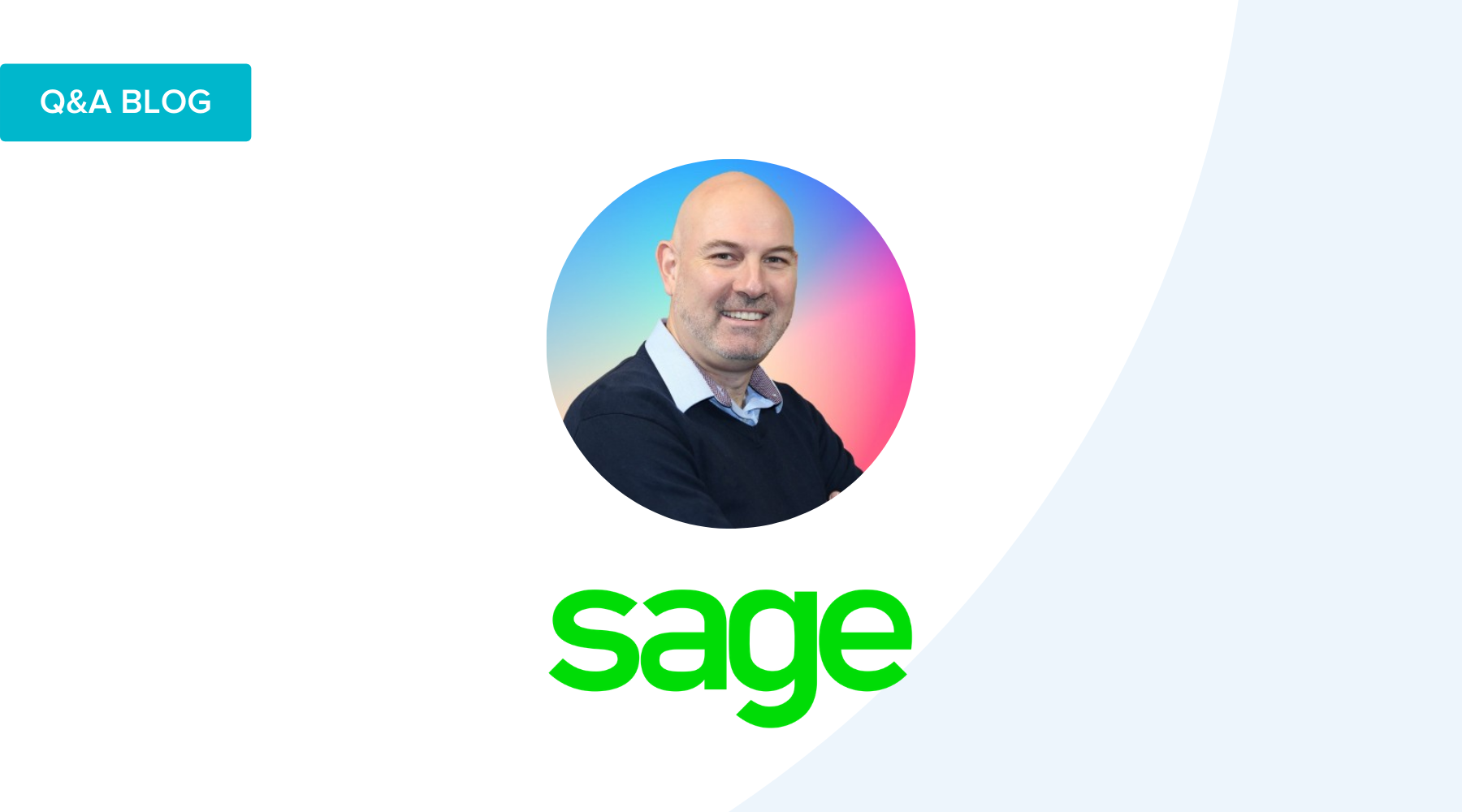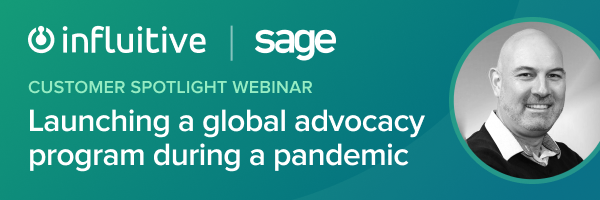In the most recent installment of our customer success webinar series, we had the chance to chat with Jon Ashley, Head of Global Customer Advocacy at Sage and one of our 2020 BAMMIE award winners for Advocate Marketer of the Year.
Sage is the market leader for integrated accounting, payroll, and payment systems for small and medium businesses. With thousands of customers across the globe, Jon’s ambition led him to do something remarkable: simultaneously launch three programs at once — one for each of Sage’s headquartered regions called Sage Champions. Such a task would be standing applause worthy in its own right, but what made Jon’s work in 2020 especially noteworthy was that he launched this global advocacy program during a pandemic.
The webinar was jam packed with great questions from the audience. So many in fact, that we didn’t have time to address them all live. Read on to learn more about Sage’s success metrics, common challenges faced by advocate marketers, and balancing upsell opportunities with advocacy.
Q: Have you had the same levels of success and adoption with your program in all regions?
In short, yes. Although Covid has had an impact, it’s not as much as we had expected. We were able to exceed our program goals within 6 weeks of launching. One thing I have noticed between our EMEA and North American customers is that their interests differ. In EMEA, advocates enjoy challenges where we are asking for their opinions (product feedback, rewards ideas), and getting involved in discussions. Whilst in North America, there is definitely a propensity to do the fun ones! Also, expect an engagement rate of about 25-50%. For unengaged customers, don’t be afraid to ask them: what do they want from the program?
Q: What are the top 3-5 challenges that companies are likely to face in embracing advocate marketing and how can you manage them?
- Internal buy in: in both companies that I have launched advocacy programs, there was a degree of skepticism from some parts of the business. Additionally, advocacy marketing infuses sales and marketing elements, so there is a degree of suspicion you may get from sales! Manage it by demonstrating how you are bringing value either through a better and smoother reference process, more referrals/sales leads and easier renewals (advocates are less likely to challenge you over the cost to renew).
- Partners: if you have partners (resellers, ISVs etc.) be cautious and ensure you clearly demonstrate how the program will benefit them too. We are helping customers become even more loyal, which means they are more open to cross-sell and upsell opportunities.
- Recruitment: this is where the hard work really pays off. Sadly, one of the best recruitment strategies is at your own events (not third-party) as your sign up rate will be very high. At a former company, we had a 94% success rate signing up customers for events. Covid again has impacted this, so largely you are left with email/direct mail. Ensure you portray your community as “exclusive,” and that you clearly articulate your membership benefits and that they are compelling.
Q: What are some best practices for incentivizing customers to submit referrals?
Referrals are a tough ask at the best of times. Our approach is to make sure the referral stands out as a high point earner. Give a good amount of points for the referral, and then ensure you give even more for the closure. We have exclusive rewards just for referrals, and we ensure that we send out regular challenges to the advocates reminding them of the referral opportunity. You could also run a mini competition as well, with the top referrer getting something in addition to their points. That depends on your gifting policies though.
Q: How do you personalize your community to appeal to different customer personas?
We appreciate the community won’t appeal to everyone and to be fair, I think no matter what type of community you have, you’ll probably never get to 100% engagement. However, within ours, customers are in control. If they don’t want to be involved in the social elements, they don’t have to and can remove themselves from any areas like this, or simply dismiss social activity.
Q: How do you balance cross-sell and upsell communications with advocacy communications?
To provide a balanced experience, we present both kinds of opportunities through different types of challenges. We target our advocates based on their persona, and some cross-sell and upsell opportunities only appear after an advocate has undertaken a series of challenges through a campaign—if we see positive outcomes from the campaign, we then present the cross-sell and upsell challenges.
Q: Do you have different tiers or levels for advocates?
Our advocates are tiered by engagement levels, and we do actually use badges as a good indicator for tiering (and specific groups like references, blogs and podcasters).
Q: How is your advocacy team structured when it comes to hub management?
We have three managers, one dedicated to each regional Sage Champions hub. Their job is to work with the local sales and marketing teams to ensure their local objectives and strategies are reflected in the local hubs. That way you get a better level of buy-in. Our local teams complete a challenge request form that provides basic details, and then the hub manager will work with the challenge submitter to turn that content into a published challenge in the hub.
Q: What are your KPIs?
We cover a number of key performance indicators, such as:
- Recruited advocates
- Challenges completed
- Engagement %
- References value
- Referral value
- Reviews created
—
Listen to the full webinar recording to hear more of Jon’s insights and to get a closer look at the Sage Champions programs. Be sure to register for our future customer success webinars which happen monthly.













































